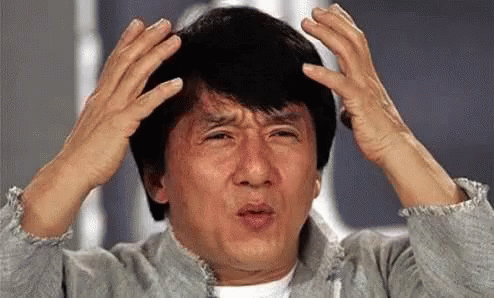Feeling nervous about writing your Economics IA is a common experience for many students. You might be wondering what the IB expects in order for you to score full marks. Don’t worry, this guide will walk you through the updated IB Economics curriculum (2022) and give you all the tools you need to shine and perform at your very best.
Diagrams (3 marks for each commentary)
Look at Jackie Chan. Do you want this to be your IA assessor?
…I didn’t think so.
Therefore, you need to explain what is in your diagram so that almost anyone would be able to understand it, even if they knew relatively little about economics.
Explain your diagram
If your diagram illustrates a change, such as a shift in the supply curve, you need to explain why it moved AND the factors that caused it. For instance, this could be because of a change in production costs or government policies. Finally, remember to also describe the change itself, such as describing the direction of the movement of the curve or the new point of the intersection.
Customize your diagrams
Diagrams in your economics IA should be custom-made to effectively illustrate your analysis and should be tailored to fit the particular context of your commentary. By designing your diagrams to fit your specific argument, you demonstrate your ability to think critically and apply your knowledge to a practical scenario. Additionally, creating original diagrams can enhance the assessor’s understanding of the material, which can lead to a higher score in the diagram category.
Accurately label your diagram
Another key aspect to consider is the proper labeling of your diagrams. To make sure that your diagrams receive full marks, you should review the guide “How to Draw Professional Looking Economics Diagrams” here and follow the detailed step-by-step instructions.
Terminology (2 marks for each commentary)
“Ceteris Paribus!“
No, it’s not a magical spell from J.K. Rowling’s famous Harry Potter franchise. It’s a Latin phrase commonly used in the field of Economics which means ‘all else equal’.
You see, within the field of economics we often like to use a lot of technical terminology in order to make ourselves appear much more intelligent and big brained than we really are. As an economics student, you will be required to follow this long-held tradition.
Defining the key words
There is some debate as to whether students should define key words in the introduction section of their economics IA. One one hand, defining key words helps to demonstrate that you actually understand the technical language being used in your commentary. On the other hand, it could be argued that using key words correctly and in the appropriate context provides a better measure of understanding.
In general, it is not recommended to define all of the key terms in the introduction of your economics IA since it can use up valuable word count unnecessarily. However, students may be well-served by defining their key concept in the introduction and relating the concept to the article.
Terms are relevant
To elaborate on the previous point, it is crucial to establish a clear link between the terminology you use and the specific article or scenario you are analyzing. This will demonstrate your understanding of how the concepts and principles apply in a real-world context and will help to make your analysis more relevant and interesting for your reader. Using terminology which is not highly relevant to your commentary will result in a lower mark for this category.
Use economic terms appropriately
Using terminology correctly is not sufficient if you do not also fully grasp how to use them. To score full marks you need to use the key words (and any other terminology) correctly, in the correct context and in a way that demonstrates your understanding of underlying concepts. Remember, using terminology incorrectly or using vague terms can give the impression that you lack understanding.
If you are unsure about a word or its usage, seek guidance from your teacher.
Application and analysis (3 marks for each commentary)
What would Kanye West teach if he was an economics professor?
…Kanyesian economics.
In my opinion, Kanye would probably be a terrible Economics teacher and student. He may have made some pretty interesting music, but his lack of strong logic and reasoning skills would leave him ill-equipped for the IBDP. He is a billionaire though, so I doubt that he cares.
Enough about Kanye. For this category you will be assessed by your use and understanding of economic theories, as well as your ability to demonstrate strong use of logic and reasoning.
Use of relevant theories
First and foremost, it is essential that the theory or theories you have included in your analysis are relevant to the article you are analyzing. This means that you should carefully consider the concepts and principles being discussed in the article, and choose theories that align with and help to explain these concepts. Note that any economic theory you use, must also be included in the IB Economics syllabus.
Show a clear understanding of theory
It is also crucial that you demonstrate a clear understanding of economic theory. This includes being able to clearly explain the key concepts and principles of the theories you are using, and how they relate to the article or topic you are analyzing. Make sure to study the theories and diagrams you use in your commentary in-depth to ensure a proper understanding.
Strong use of logic and reason
Use economic theories to make straightforward, logical predictions about the expected outcomes of the policy or situation discussed in the article. This shows that you are able to apply the models as they have been taught in the classroom and as they appear in the curriculum. You can challenge and critique the models and theories used later in the evaluation section of your commentary.
If you want to learn “How to Effectively Structure Your Economics IA” click here.
Key concept (3 marks for each commentary)
To receive full marks here, a mere mention of the key concept(s) is inadequate. You need to connect the dots between the theory and the article, and demonstrate how the theory helps explain the article. It should also be very clear as to which key concept(s) you have chosen as part of your commentary.
Recommended Key Concepts
While selecting the key concepts for IAs, it’s worth considering that certain concepts might align better with particular IAs. However, the table below should only be taken as a reference point. Students have the freedom to choose any key concept for their IA.
| IA | Key concept | Topics |
| Macroeconomics | Intervention*, economic well-being, equity | Monetary policy, fiscal policy, inflation |
| Microeconomics | Efficiency*, intervention | Market failure |
| The Global Economy | Interdependence*, intervention, efficiency | Tariffs |
Useful tips and tricks
- Generally, students should avoid choosing the key concepts ‘choice’ or ‘change’ as these term are too vague
- Highlighting your IA’s key concept in bold could potentially help improve visibility for your assessor
- Highlighting text related to the key concept could also help the reader to understand how your key concept links back to the article
- It is not advisable to pick more than one key concept per commentary. When you use a key concept, you cannot use it again in your next IA
- Make sure your commentary is aligned to the points the key concept addresses in your curriculum (read the book)
- Include a definition of the key concept in the introduction of your commentary
Evaluation (3 marks for each commentary)
“I am inevitable.” – Thanos (I think)
For those of you who have seen “Avengers: Endgame,” you will remember the epic final showdown between the Avengers and Thanos. It was a battle for the ages to defeat the Mad Titan and restore balance to the universe.
But what does this have to do with economics, you may ask? Well, just like how the fate of the universe hung in the balance during that fateful battle, so too does the future of your Economics IA. The evaluation is your own personal Endgame, and your one and only chance to show the world (or your teacher) your epic evaluation skills.
So let’s get ready to assemble and take on this great challenge together.
Demonstrate a nuanced understanding
To do well in the evaluation section of your economics IA, you need to show that you understand all the details and subtleties of the situation or policy discussed in the article. This involves explaining different viewpoints and how they may affect different stakeholders, as well as pointing out any underlying assumptions and limitations of the theory or model you are using.
Additionally, it is important to present a balanced and objective analysis, highlighting both the strengths and weaknesses of the theory or policy, and providing a thoughtful evaluation of the overall situation. This way, you will show that you have a strong understanding of the subject and can think critically about economic concepts and principles.
Provide a convincing argument
Having read your evaluation the reader should have the sense that they have understood the situation, and feel convinced by your conclusion. This does not necessary mean that the assessor is in agreement with you, but simply that the arguments you have presented are based on strong evidence, logical reasoning and use of establish economic theory.
Use CLASPP
One widely-used technique for evaluating economic theories is the CLASPP acronym, created by IB Economics educator Tim Woods. The CLASPP acronym stands for conclusions, long-term and short-term effects, assumptions, stakeholders, priorities and pros and cons. Mr. Woods suggests that students use three or more of these types of evaluation as part of their commentary.
If you want to learn more about the CLASPP method of evaluation click here.
Rubric requirements (3 marks across the entire portfolio)
Your articles must meet the following requirements:
- Each article is based on a different unit of the syllabus.
- Each article is taken from a different and appropriate source.
- Each article was published no earlier than one year before the writing of the commentary.
Author Profile

- Luke Watson has a BSc (Hons) in international business and economics. He is currently working as an IBDP economics teacher at Shanghai United International School in China.
Latest entries
- March 10, 2023CourseHow the Fed Sets Interest Rates Post-Crisis
- February 5, 2023CourseHow to Calculate the Gini Coefficient Using the Lorenz Curve
- January 29, 2023CourseHow to Score Full Marks on the Economics IA
- January 29, 2023CourseHow to Effectively Structure Your Economics IA









Comments are closed